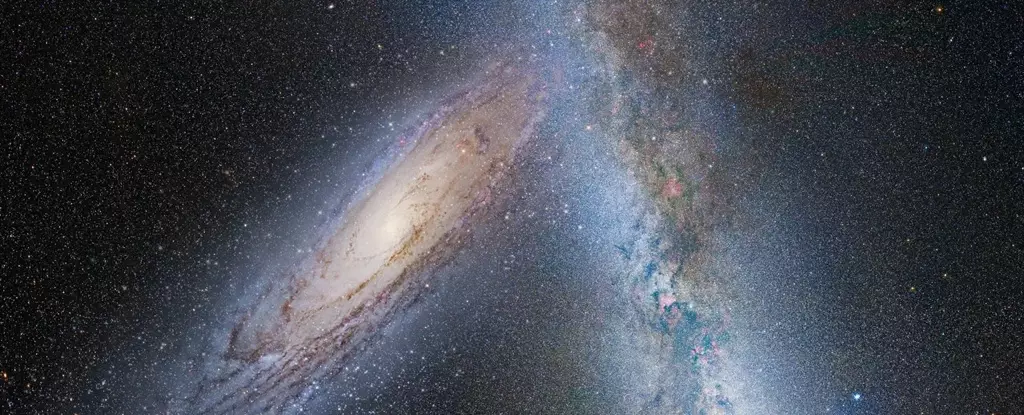The Andromeda galaxy is currently hurtling towards our Milky Way at a speed of 110 kilometers per second, leading many astronomers to predict a collision between the two galaxies. However, recent research from the University of Helsinki and Durham University challenges this assumption. By analyzing data from the Gaia and Hubble space telescopes, the researchers found that the odds of a collision occurring within the next 10 billion years are closer to 50/50.
Factors at Play
The study considered not only the movements of the Milky Way and Andromeda but also two other major galaxies in our Local Group – the Large Magellanic Cloud and the Triangulum Galaxy. When each galaxy was examined in isolation, the probability of a collision within 10 billion years was just under half. However, adding the Triangulum Galaxy increased the chances to two-thirds, while including the Large Magellanic Cloud decreased the probability to one-third. A simulation with all four galaxies resulted in a Milky Way-Andromeda merger just over 50% of the time.
If a collision were to occur, it is expected to take more than 7.6 billion years to complete, much longer than previously estimated. This extended timeline means that any potential merger is unlikely to affect life on Earth, as the Sun is only expected to survive for another 5 billion years. The gravitational interactions between stars during a merger would result in new orbits and accelerated star formation, ultimately transforming the galaxies into a single elliptical galaxy dubbed “Milkomeda.”
Despite the predictions of a collision, there is still a considerable degree of uncertainty surrounding the future evolution of the Milky Way and Andromeda. The researchers noted that the outcome could also result in the galaxies continuing to evolve separately for eons to come. More research, including forthcoming data releases from the Gaia telescope, may provide further insight into the fate of these galaxies. The conclusion remains that while a collision is a possibility, it is by no means a certainty.
In light of the new research, the idea of a catastrophic collision between the Milky Way and Andromeda seems less definitive than previously thought. While the potential merger remains a fascinating and complex scenario, it is essential to acknowledge the uncertainty that surrounds it. As astronomers continue to study these galaxies and gather more data, our understanding of their future will undoubtedly evolve. The once-dreaded collision may turn out to be just one of many possible outcomes in the vast and mysterious cosmos.


Leave a Reply